A clean mattress is essential for both your health and the quality of your sleep. Over time, mattresses accumulate dust, sweat, dead skin cells, and even dust mites, which can lead to unpleasant odors and allergies.
While many people remember to wash their sheets regularly, the mattress itself is often overlooked.
Learning how to clean a mattress properly can extend its lifespan, improve hygiene, and create a fresher sleeping environment.
Whether you’re dealing with stains, odors, or simply aiming for a deep refresh, a few effective cleaning techniques can make a big difference in keeping your mattress fresh and healthy.
How often should you clean your mattress?

Your mattress is where you spend nearly one-third of your life, making it a hotspot for dust, sweat, oils, and allergens.
To maintain excellent hygiene, you should clean your mattress at least twice a year. However, if you suffer from allergies, own pets, or live in a humid environment, cleaning every three months is recommended.
Regular cleaning helps eliminate dust mites, bacteria, and dead skin cells, which can build up quickly. Beyond deep cleaning, it’s also wise to vacuum your mattress monthly to remove surface dirt and hair.
Using a mattress protector can reduce the amount of buildup, but it’s not a replacement for cleaning.
If your mattress develops stains from spills, sweat, or accidents, spot-clean immediately to prevent permanent marks. Stains left untreated can seep deeper, becoming harder to remove later.
By sticking to a cleaning routine, you’ll not only extend your mattress’s lifespan but also ensure a healthier and fresher sleeping environment.
Remember, a clean mattress means better sleep and reduced risk of allergies, so don’t overlook this essential step in your home cleaning routine.
How to clean a mattress—what you need
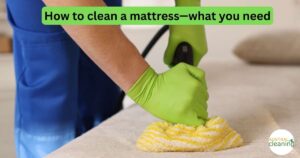
Before you begin cleaning, it’s important to gather the right supplies. Having the correct tools ensures the process is easier and more effective. Some of the basic essentials include:
- Vacuum cleaner with upholstery attachment—to remove dust, crumbs, and pet hair.
- Bicarbonate of soda (baking soda)—a natural deodorizer that absorbs moisture and odors.
- White vinegar (diluted)—effective for disinfecting and removing stains.
- Dishwashing liquid—gentle but effective on light stains.
- Spray bottle and clean cloths—for applying solutions and blotting stains.
- Sunlight (UV light)—nature’s disinfectant to kill bacteria and freshen up the mattress.
Optional extras include enzyme cleaners for organic stains (like sweat or urine) and a mattress protector to prevent future buildup.
It’s important to note that you should never soak your mattress or use excessive water, as moisture can lead to mold and mildew. Instead, focus on light cleaning with the right products.
With these tools ready, you’ll be equipped to tackle everything from regular cleaning to stubborn stains.
Regular clean
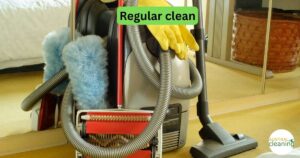
A regular clean is key to keeping your mattress fresh and long-lasting. Start by stripping the bedding and washing your sheets, pillowcases, and mattress protector.
Next, use a vacuum cleaner with an upholstery attachment to thoroughly remove dust, dirt, and debris.
Pay close attention to seams and crevices, as these areas often trap dust mites and allergens.
Once vacuumed, sprinkle a thin, even layer of bicarbonate of soda across the entire mattress surface.
This helps neutralize odors and absorb any lingering moisture. For an extra boost, add a few drops of essential oil, like lavender or eucalyptus, to the baking soda before sprinkling.
Leave it to sit for at least 30 minutes to 2 hours before vacuuming it off. If possible, place your mattress near a sunny window or outside in direct sunlight.
UV rays naturally disinfect and help reduce bacteria and odors. Finally, flip or rotate your mattress to ensure even wear.
By making regular cleaning part of your routine, you’ll prevent allergens from building up and enjoy a fresher, healthier sleep environment without needing frequent deep cleans.
Light to moderate stains
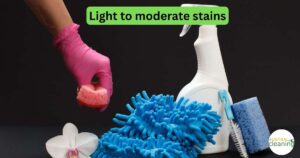
When dealing with light to moderate mattress stains, quick action is key. Stains such as sweat, mild spills, or surface dirt can usually be removed with simple household ingredients.
Start by blotting the stain with a clean, dry cloth—never rub, as this can spread the stain deeper.
For sweat or mild spills, mix a few drops of dishwashing liquid with warm water and dab the area gently using a sponge or cloth. Blot until the stain fades, then allow the mattress to air dry.
For tougher light stains, a vinegar and water blend (equal parts) can be effective. Spray lightly on the stained area and blot until the mark begins to lift. Vinegar also works as a natural disinfectant, killing bacteria and neutralizing odors.
Once cleaned, sprinkle bicarbonate of soda over the spot to absorb remaining moisture and odors. Leave it for at least 30 minutes before vacuuming.
By addressing stains early, you prevent them from setting permanently. Regular spot cleaning ensures your mattress remains both fresh-smelling and hygienic, extending its usability.
Heavy stains

Dealing with heavy mattress stains like urine, blood, or deep wine spills requires stronger techniques. First, blot up as much of the liquid as possible with paper towels.
Never scrub harshly, as it will push the stain deeper into the fabric.
For urine stains, create a cleaning solution of vinegar and water (1:1 ratio), spray generously, and blot with a cloth.
Follow this by sprinkling bicarbonate of soda over the damp area, leaving it for a few hours before vacuuming. This not only removes stains but also neutralizes odors.
For blood stains, a paste of bicarbonate of soda and cold water works best. Apply it directly to the stain, leave it for 30 minutes, then wipe gently with a damp cloth.
If the stain is stubborn, repeat the process or use an enzyme-based cleaner, especially for organic stains.
After heavy cleaning, ensure your mattress is dried thoroughly to avoid mold growth. Placing it outside in direct sunlight (UV light) helps speed up drying while killing bacteria.
With patience and the right approach, even tough stains can be removed, restoring your mattress to a fresher state.
How to clean light to moderate mattress stains?
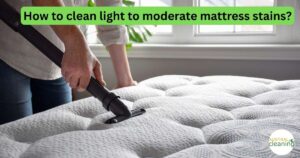
Light to moderate stains like sweat or food spills don’t always require harsh chemicals. For these, a gentle cleaning approach works best.
Start by blotting the area with a dry cloth to soak up any excess liquid. Next, mix 1 teaspoon of dishwashing liquid with 2 cups of warm water.
Dip a sponge into the solution and dab the stain gently. Avoid soaking the mattress. Once the stain lifts, blot with a clean damp cloth to remove soap residue.
If odors remain, use a vinegar and water spray (equal parts) and lightly mist the area. Blot again with a dry cloth.
To finish, cover the spot with a light layer of bicarbonate of soda to absorb any lingering moisture and odors. Leave for at least 1–2 hours before vacuuming.
This process is safe, simple, and effective for day-to-day stains without damaging your mattress. Making it part of your cleaning routine ensures stains never become permanent.
Should you put your mattress on the floor?
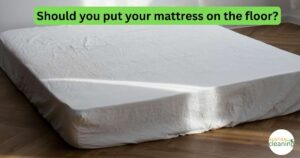
Placing your mattress directly on the floor may seem convenient, but it has both pros and cons. On the positive side, it can feel more stable, and some people enjoy the minimalist look.
However, the drawbacks often outweigh the benefits. When a mattress sits on the floor, airflow is restricted, leading to trapped moisture.
This can encourage mold, mildew, and bacteria growth, especially in humid environments.
Additionally, mattresses on the floor tend to collect more dust, dirt, and allergens, making cleaning more difficult.
Another issue is lack of support, which can shorten your mattress’s lifespan. Without a proper bed frame or foundation, the mattress may sag or lose shape over time.
From a hygiene perspective, sleeping close to the floor also means being closer to insects, pests, and colder air.
If you do choose to place your mattress on the floor, make sure to lift and air it out regularly, vacuum underneath it, and avoid placing it on damp surfaces.
Ultimately, using a bed base or frame is the healthier and more durable option.
Conclusion

Your mattress plays a vital role in your sleep quality and overall well-being, which makes regular cleaning essential.
From vacuuming and using bicarbonate of soda to tackling light and heavy stains with natural solutions like vinegar and dishwashing liquid, there are plenty of effective methods to keep it fresh.
Don’t forget the benefits of UV light from the sun, which acts as a natural disinfectant.
By following a consistent cleaning routine, you’ll extend the life of your mattress, reduce allergens, and enjoy a healthier sleep environment.
Remember, a little effort goes a long way in ensuring your mattress stays clean, fresh, and comfortable.
FAQs on Cleaning a Mattress
1. Can I use a steam cleaner on my mattress?
Yes, but you need to be cautious. A steam cleaner can sanitize and kill dust mites, but if too much moisture is left behind, it can cause mold and mildew. Always use the lowest steam setting, allow plenty of drying time, and never oversaturate your mattress.
2. How do I get rid of bad odors from my mattress?
The best way to remove odors is by sprinkling a generous amount of bicarbonate of soda (baking soda) over the surface and leaving it for a few hours before vacuuming. For stronger odors, you can mix vinegar and water in a spray bottle and lightly mist the mattress before applying baking soda.
3. Can all stains be removed from a mattress?
While most light to moderate stains can be removed with dishwashing liquid, vinegar, or baking soda, some deep or old stains may never fully disappear. In those cases, you can minimize the appearance and odor with repeated cleaning. Using a mattress protector is the best way to prevent stains in the first place.

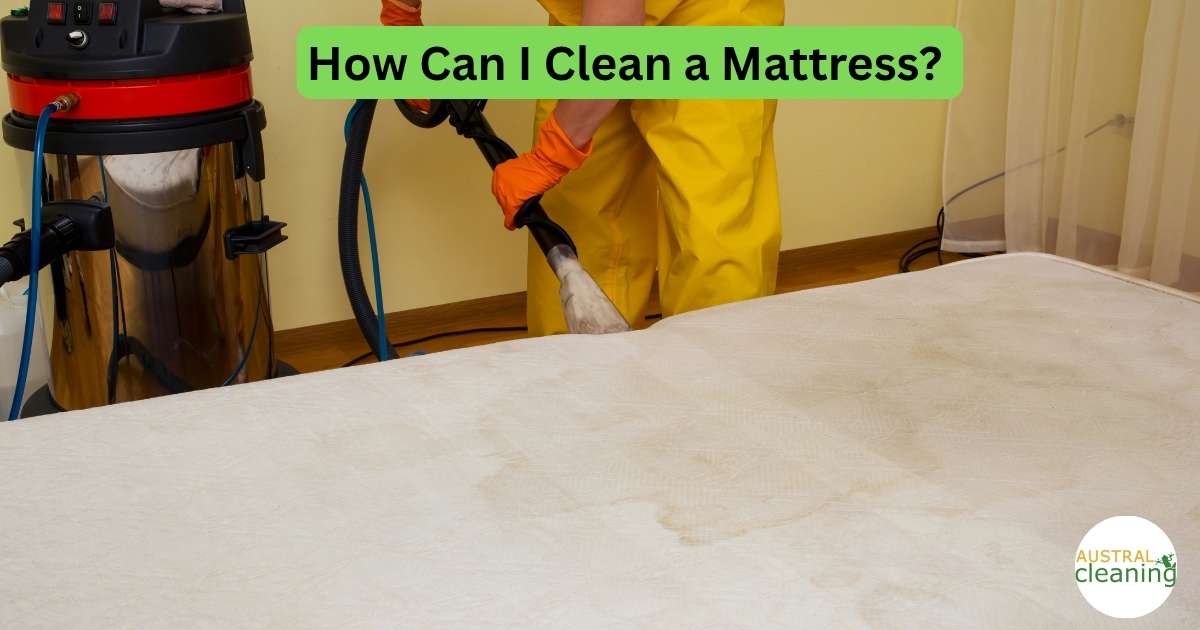
Leave A Comment